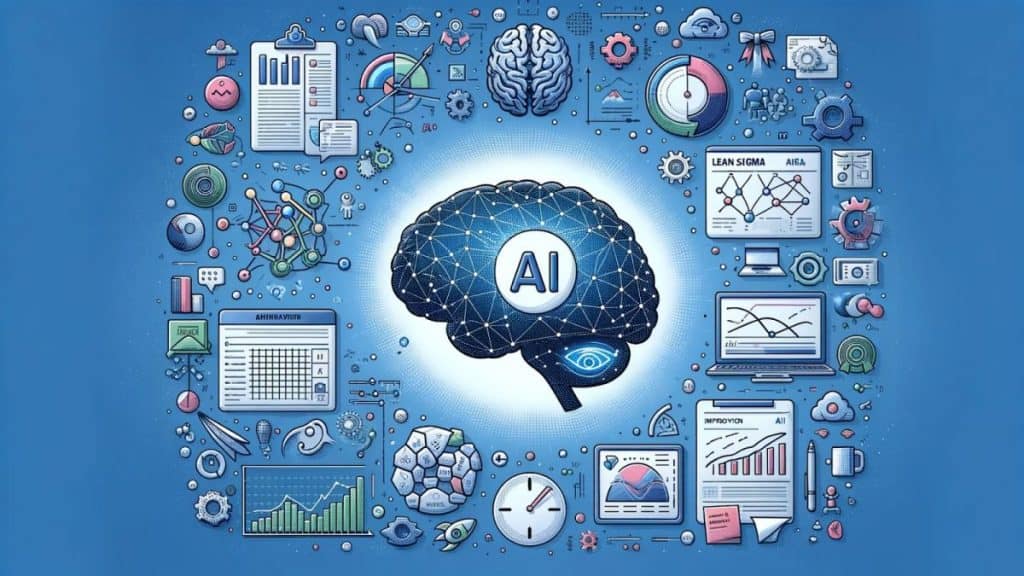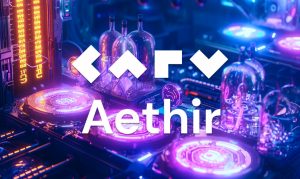AI Can Improve Industrial Operation Efficiency When Combined With Lean Six Sigma: Study


In Brief
AI’s growing prowess is demonstrating its utility for improving traditional industrial processes, resulting in significant cost savings.

The increasing integration of generative AI into operational improvement processes signifies a transformative shift in the landscape. While traditional methods like Lean and Six Sigma have long relied on human expertise, AI is proving to be a game-changer in terms of speed and efficiency.
AI has already demonstrated its utility in different stages of the Lean Six Sigma process, augmenting human efforts. Examples include companies like Johnson & Johnson and Voya Financial, Intel and Nvidia which have successfully implemented AI in their process improvement initiatives, resulting in significant cost savings.
AI’s Key Differentiator from Traditional Approaches
“Lean” and “Six Sigma” are the traditional ways for enhancing processes. Originating at Toyota, Lean thinking continuously enhances processes by eliminating activities that lack value (“waste”) from the customer’s perspective.
Rooted in Motorola and later endorsed by General Electric, Six Sigma focuses on refining processes by minimizing undesired variation (“defects”) in every step. Lean and Six Sigma are often collectively referred to as “Lean Six Sigma” due to their shared tools and common ancestry.
At the core of Lean Six Sigma lies a systematic approach to pinpointing the root cause of operational issues, formulating solutions and ensuring the permanence of improvements. This falls within the purview of process improvement specialists, with “Black Belts” representing the highest level.
While artificial intelligence (AI) has proven its efficacy in repetitive operations, the prevailing belief underscores that process improvement demands contextual awareness and creativity, remaining an exclusive domain of human experts.
Leveraging AI to Streamline Industrial Processes
Examining the DMAIC (“define, measure, analyze, improve, control”) routine of Lean Six Sigma reveals AI’s transformative impact on each stage.
- From the “Define” stage, where AI is trained using digital records or process mining technology, to the “Measure” stage leveraging IoT devices, barcodes, and cameras, AI augments human efforts in understanding and measuring complex processes.
- The “Analyze” stage benefits from AI’s computational efficiency, surpassing traditional methods like the “Five Whys.”
- In the “Improve” stage, AI’s prowess in identifying optimal performance configurations represents a departure from the norm of standardizing processes, allowing for customization based on product and context.
- Finally, in the “Control” stage, AI excels in real-time monitoring, essential for detecting outliers, as demonstrated in fraud detection in financial transactions.
The AI system can be trained to comprehend the process through two methods. One approach involves utilizing the digital records of material, information, and financial flows within the organization, generated by common IT systems like widely used enterprise resource planning (ERP) systems.
Alternatively, process mining technology can be employed to extract digital data from systems and applications, revealing how processes operate.
By identifying common processes and their corresponding steps through the extraction of repeating patterns observed in the data, companies like Siemens, BMW and Merck are actively utilizing process mining for extensive enhancements across entire processes.
Overcoming Challenges to Foster Innovation
AI is already augmenting all stages of the process improvement cycle but emphasizes the challenges that leaders will face as AI assumes a more significant role. Key challenges include a diminishing emphasis on traditional tools and techniques, the need for new competencies among improvement experts, and the requirement for major organizational change.
While AI offers immense potential to revolutionize process improvement by reducing labor-intensive tasks, its successful integration requires leaders to navigate challenges, adapt to new competencies, and ensure active engagement from the workforce.
Disclaimer
In line with the Trust Project guidelines, please note that the information provided on this page is not intended to be and should not be interpreted as legal, tax, investment, financial, or any other form of advice. It is important to only invest what you can afford to lose and to seek independent financial advice if you have any doubts. For further information, we suggest referring to the terms and conditions as well as the help and support pages provided by the issuer or advertiser. MetaversePost is committed to accurate, unbiased reporting, but market conditions are subject to change without notice.
About The Author
Anya is a seasoned IT writer with a passion for exploring cutting-edge topics in the tech industry, including generative AI, Web3 gamification, and large language models (LLMs). Holding a degree in interpretation, she possesses a unique blend of linguistic expertise and technical acumen. Her inquiring mind and extensive experience allow her to navigate the ever-evolving landscape of technological innovation. Anya is dedicated to uncovering insights and trends across diverse language segments of the Internet, bringing a visionary perspective to her work. Through her articles, she aims to bridge the gap between complex IT concepts and a global audience, making technology accessible and engaging for readers worldwide.
More articles

Anya is a seasoned IT writer with a passion for exploring cutting-edge topics in the tech industry, including generative AI, Web3 gamification, and large language models (LLMs). Holding a degree in interpretation, she possesses a unique blend of linguistic expertise and technical acumen. Her inquiring mind and extensive experience allow her to navigate the ever-evolving landscape of technological innovation. Anya is dedicated to uncovering insights and trends across diverse language segments of the Internet, bringing a visionary perspective to her work. Through her articles, she aims to bridge the gap between complex IT concepts and a global audience, making technology accessible and engaging for readers worldwide.














